How to maintain a mountain bike? 5 essential tips
Lex Ligtenberg
The mountain bike, your pride and joy and your (extra) baby. Of course you can’t neglect it, otherwise it won’t listen to you when you want to change gears, start up or, if you go really crazy, steer. But what are the most important ways to keep your mountain bike in top condition to make sure it lasts as long as possible? Here are five tips to keep your mountain bike in good shape.
#1: Degrease and lubricate:
The moment you don’t regularly degrease and lubricate your chain and other drivetrain components, you cause your gear to wear faster.
Step 1: Cleaning the drive
The bike’s drivetrain acts as the engine, with you as the cyclist being the fuel, and consists of numerous small parts. These parts have the ability to trap dirt well and are therefore essential to maintain regularly. In this article, you will read how to effectively clean the complete drivetrain. Now discuss cleaning a little more superficially and focus mainly on how to maintain them for longer life.
Clean your chain with a special degreaser. WD-40 is a good example of such a cleaner. (Common mistake: Do not use WD-40 to lubricate your chain!!!!) Hold an old cloth behind your chain to catch splashes of WD-40 and spray the chain. Then use the cloth to clean your chain. To get between the links, it is best to use a special brush like this one or even a special chain cleaning device.
Tip: Use this brush first to brush off the dirt on the derailleur, chainrings and cassette, and only then for the chain. This will prevent your just-cleaned chain from going over the dirty teeth of the cassette or chainrings and getting dirty again.
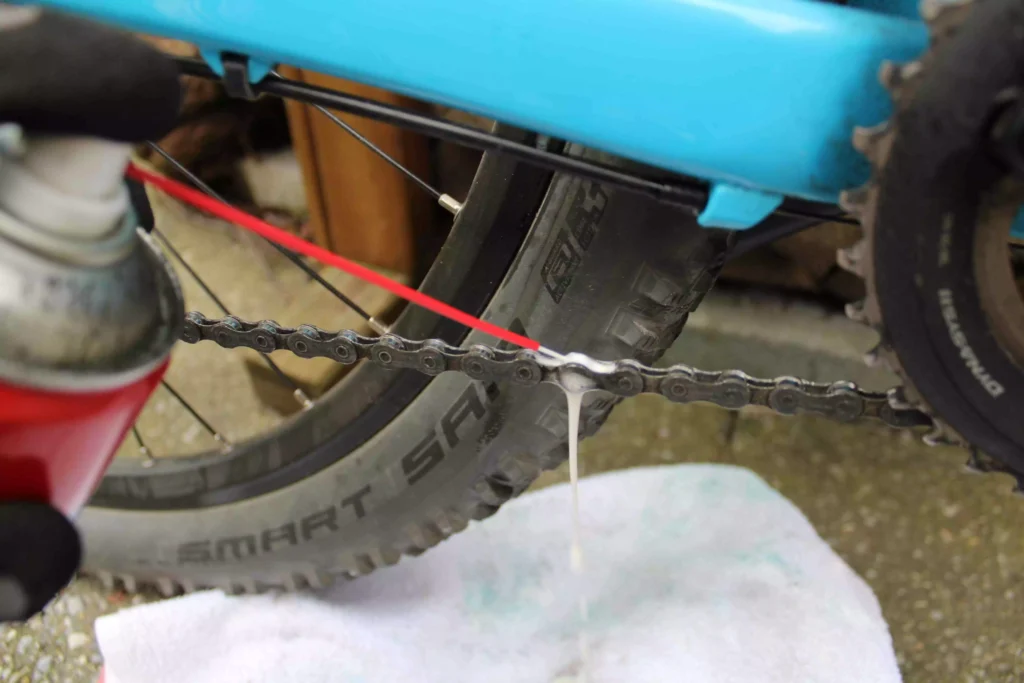
After cleaning the drive, make it dry!
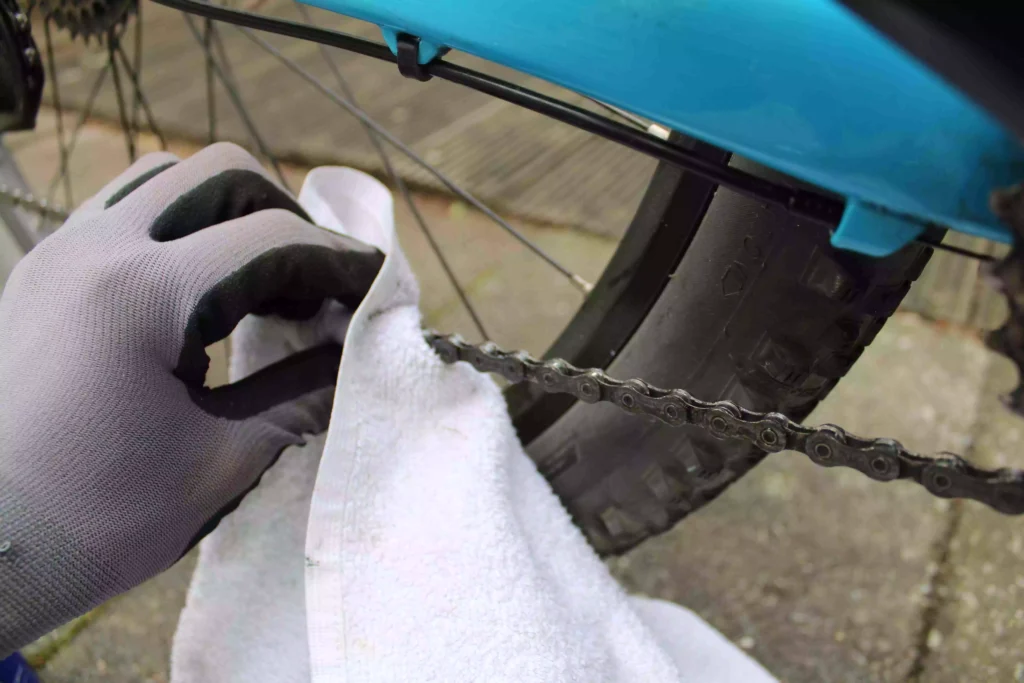
Step 2: Apply oil or wax
Apply chain oil or wax. Use a dropper bottle for this and not a spray can. The moment oil gets on the disc brakes it significantly reduces braking power and is therefore even dangerous. As a mountain biker, use ‘dry lube’ if you expect the chain not to get wet during a ride. This chain oil is thinner and creates less friction, so you need to pedal less wattage. The downside is that it easily slides off your chain in rain. Wet lube’ is thicker, so it sticks better in the rain. The disadvantage is that it attracts more dirt when riding in dry conditions.

Wet Lube for the MTB chain @ Primeauvelo-com
Step 3: Lubricate your bike chain regularly
For the life of your chain, cassette, derailleur sprockets and front sprockets, it is very important to clean and lubricate them regularly. Because of the accumulated dirt that can get stuck between these rotating parts, they need replacing more quickly. Shifting gears, for example, also becomes increasingly difficult
#2: Maintain your tyre pressure:
Correct tyre pressure makes for less punctures. So before heading out, check that your tyres are at the right pressure. With mountain bikes, tyre pressure listens very closely. There are several aspects to take into account when setting off. These include the surface, the moisture of the ground, the tyre width and the weight of the rider. In addition, it should also just feel right and everyone has a personal preference. For example, are you riding through a wet forest? Then make sure you have a lower tyre pressure (between 1.2 and 1.5 bar) than over dry asphalt (between 1.4 and 1.8 bar). There are even entire spreadsheets you can use to determine what the perfect tyre pressure is for your MTB and your situation.
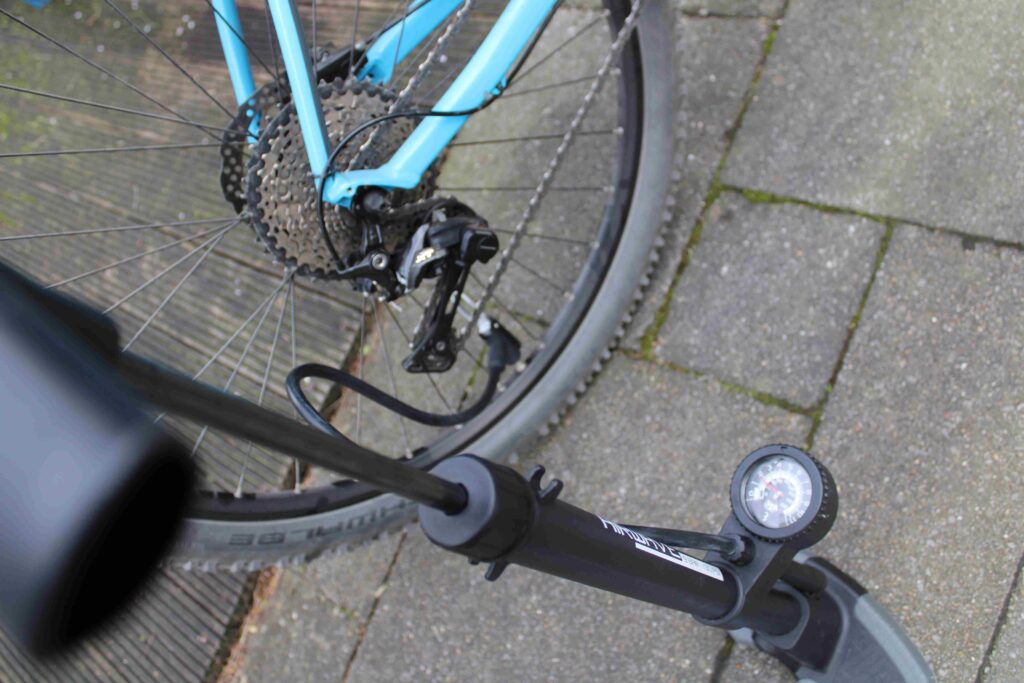
#3: Purchase the right tools:
To maintain your mountain bike properly, you need the right tools to loosen parts, for example, or to access something more easily. This way, you make sure you don’t damage the parts or have to go to the bike shop again with your feet in the air because you can’t get out again.
1. Allen spanner
An indispensable tool is, of course, the hex key. The hex keys you need for your mountain bike vary between 2mm and 8mm. This allows you to replace your pedals, stem, brakes and saddle, among other things, but also adjust your derailleur with an Allen key.
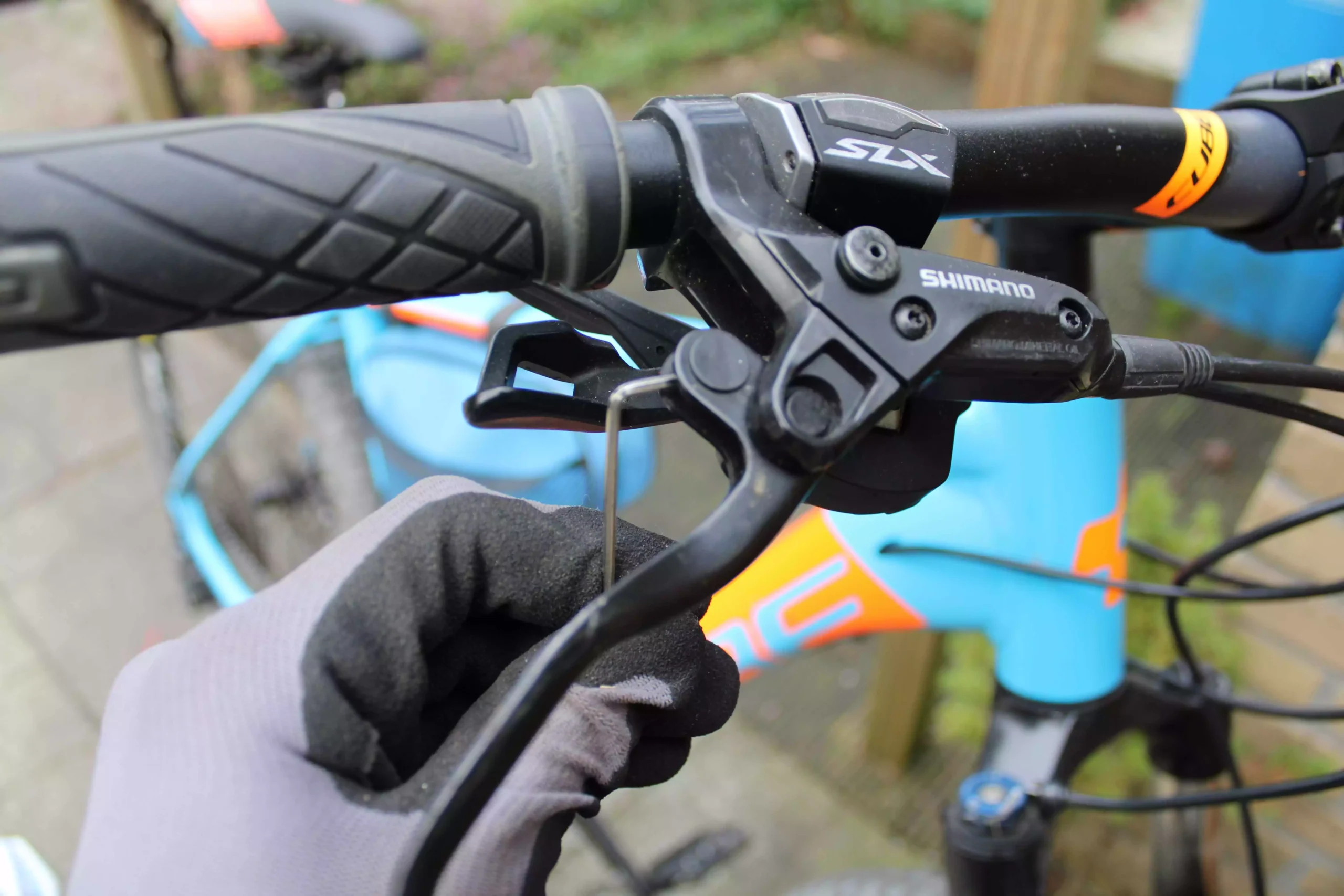
2. Chain checker
Surely the next step towards independence from the bike shop is the chain checker. With a chain checker, you measure how badly your chain is worn and whether it already needs replacing. You do this by looking at the length of the chain. The bike chain gets longer the more kilometres it has done. If the chain is too long, you need a new chain.
3. Chain whip and cassette descender
The chain whip and cassette remover are also crucial if you want to be your own bike mechanic. This is because with these, once you have removed your wheel from the mountain bike, you disassemble your cassette. You put the chain whip on the cassette and push in the opposite direction with the cassette remover. That way, your cassette comes off and you can easily clean all the sprockets. Check here a detailed explanation with video
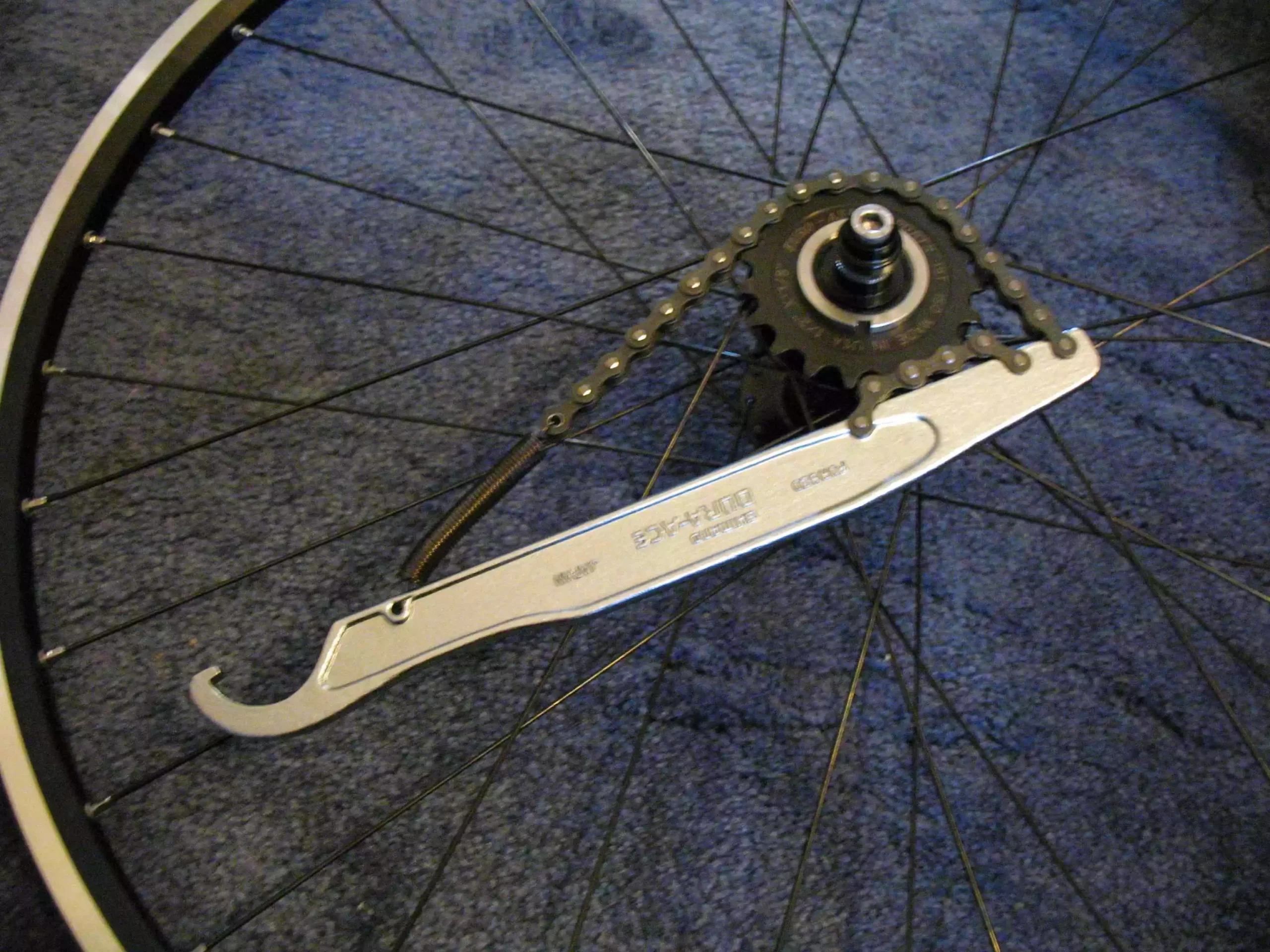 Chain whip on cassette @ Bruce McAdam
Chain whip on cassette @ Bruce McAdam
#4: Replace your brake pads on time:
Mountain bikers are not averse to a bit of rain, mud or snow. That makes a cool ride an epic challenge! Besides, stay-at-home riders are always wrong and the trails are naturally a lot quieter, allowing you to do your tricks undisturbed without getting stuck in traffic jams. However, the big disadvantage of riding in the rain and mud is that your brake pads wear out a lot faster. It is then important not to wait too long to replace your brake pads. So when should you replace your brake pads? The moment the brake pad thickness is only half a millimetre, it is time to replace the brake pads. Roughly speaking, there are three types of disc brake pads, each with its own advantages and disadvantages. Hard disc brake pads are more durable, but do not allow you to dose your braking power as well. Soft disc brake pads do not last as long, but generally have more braking power.
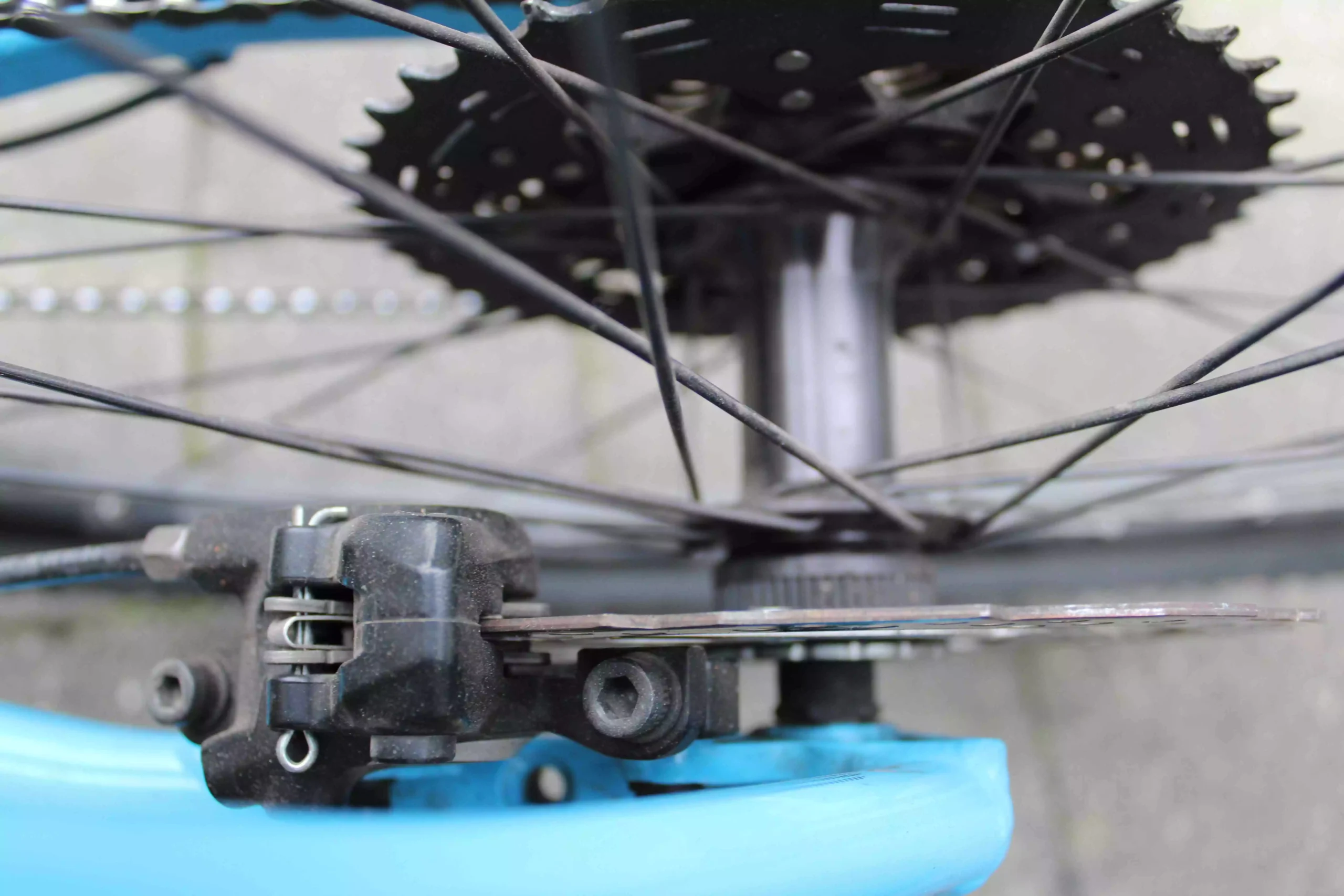 Disc brake pads from a blue mountain bike
Disc brake pads from a blue mountain bike
#5: Don’t leave your mountain bike outside and hang it inside on the Pedal Hanger!
Wear and tear on parts happens fastest after rides in rain, snow or if salt has been sprinkled during frost. Mountain bikers in the Netherlands are obviously not afraid of a bit of cold and muck, but after every wet ride, at least make sure you pamper your mountain bike properly. Our final mountain bike maintenance tip is all about a little TLC. After all, the worst thing you can do for wear and tear is to leave it outside without looking after it any further. Resulting in rust, creaking bearings and stuck brakes. To best protect it from wear and tear, our final tip is to store your mountain bike indoors. The most MTB-friendly way to store your bike indoors is on the Pedal Hanger.
 Blue Mountain Bike hung on the wall on a Flowter Pedal Hanger
Blue Mountain Bike hung on the wall on a Flowter Pedal Hanger
This system is optimised for mountain bikes, partly because you can hang the bike horizontally. Vertical suspension with hydraulic disc brakes can cause air bubbles, which significantly reduce braking power. Spokes can also be damaged, which does not happen with the Pedal Hanger. In other words, a perfect addition for your man cave!
Maintaining your mountain bike is crucial to enjoy your bike for as long as possible. This way, parts such as the chain and cassette wear out less quickly, you never ride with too much or too little tyre pressure, you get to know your bike better and recognise small defects faster, you know which brake pads you want and when to replace them and you store it safely and securely in the shed or living room with the Pedal Hanger.

